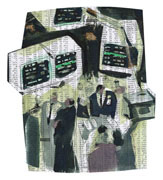The Spanish stock market is breaking all records. Its principal index, the Ibex 35, has been the best performer among the main international indicators, and all the stock exchanges are confident that the year will end as a success. However, this flood of good news has aroused a reaction from some prophets of doom who, afraid that the ceiling has been reached, are beginning to recommend caution to investors and are even beginning to get out of the stock market. Experts consulted by Universia-Knowledge at Wharton shed some light on the issues.

Sign up to stay informed about our latest article releases.